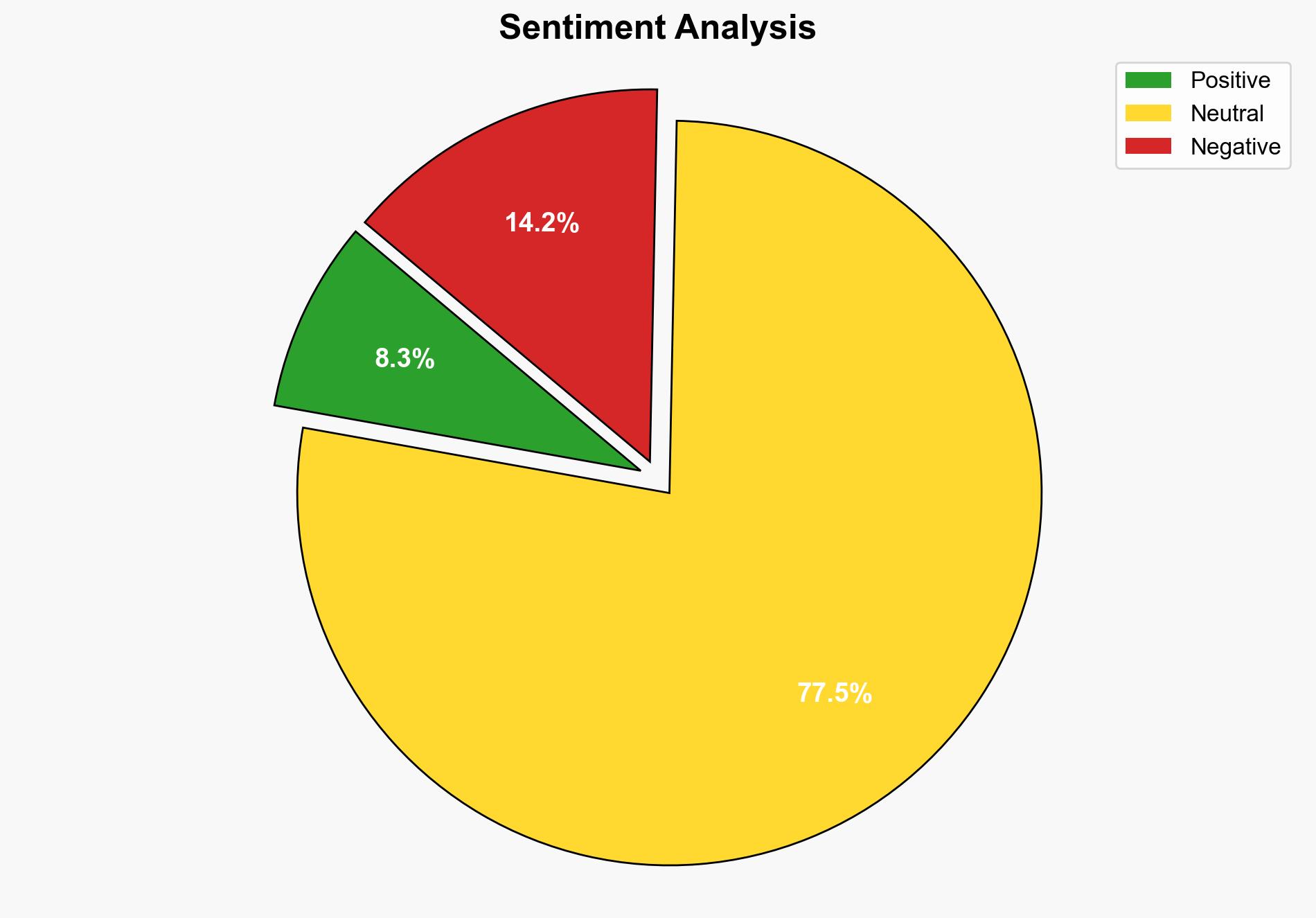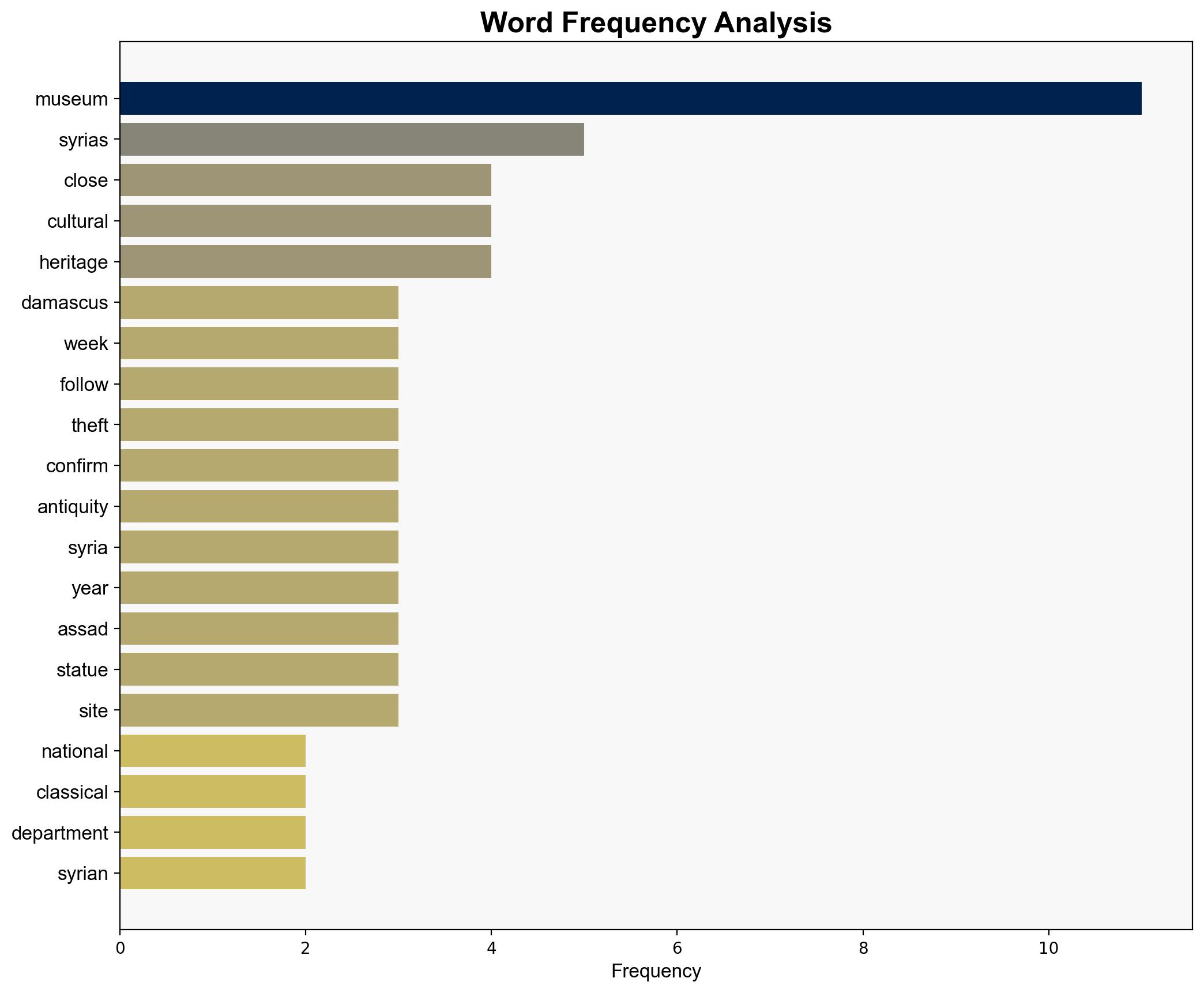Heist at National Museum of Damascus Spurs Search for Missing Artifacts – ARTnews
Published on: 2025-11-11
AI-powered OSINT brief from verified open sources. Automated NLP signal extraction with human verification. See our Methodology and Why WorldWideWatchers.
Intelligence Report: Heist at National Museum of Damascus Spurs Search for Missing Artifacts – ARTnews
1. BLUF (Bottom Line Up Front)
The heist at the National Museum of Damascus likely involves organized criminal elements exploiting the region’s instability. The most supported hypothesis is that the theft was orchestrated by a well-connected group with potential international ties. Confidence Level: Moderate. Recommended action includes enhancing security protocols and international cooperation to track and recover the stolen artifacts.
2. Competing Hypotheses
Hypothesis 1: The theft was conducted by an organized crime syndicate with international connections, aiming to sell the artifacts on the black market.
Hypothesis 2: The theft was an opportunistic act by local actors exploiting the museum’s vulnerabilities, with no immediate plans for international sale.
Hypothesis 1 is more likely due to the sophisticated nature of the heist, the specific targeting of valuable items, and the historical precedent of international trafficking of artifacts from conflict zones.
3. Key Assumptions and Red Flags
Assumptions: The museum’s security was compromised, and the artifacts hold significant market value. The political instability in Syria provides a conducive environment for such crimes.
Red Flags: Anonymous sources and lack of detailed information from official channels suggest potential information suppression or manipulation. The rapid release of detained employees could indicate internal collusion or pressure.
4. Implications and Strategic Risks
The theft underscores vulnerabilities in cultural heritage protection during political instability. It may encourage further criminal activities targeting cultural sites, potentially funding extremist groups. The incident could strain international relations, especially if artifacts surface in foreign markets, prompting diplomatic disputes.
5. Recommendations and Outlook
- Actionable Steps: Enhance museum security with international assistance, increase surveillance, and establish a rapid response team for cultural heritage protection.
- Best Scenario: Artifacts are recovered quickly through international cooperation, deterring future thefts.
- Worst Scenario: Artifacts are lost to the black market, funding illicit activities, and damaging Syria’s cultural heritage irreparably.
- Most-likely Scenario: Partial recovery of artifacts after prolonged investigation, with some items permanently lost.
6. Key Individuals and Entities
Brig. Gen. Osama Atkeh (Police Chief, Damascus), Syrian Directorate General of Antiquity and Museums.
7. Thematic Tags
National Security Threats, Cultural Heritage Protection, Organized Crime, International Trafficking
Structured Analytic Techniques Applied
- Cognitive Bias Stress Test: Expose and correct potential biases in assessments through red-teaming and structured challenge.
- Bayesian Scenario Modeling: Use probabilistic forecasting for conflict trajectories or escalation likelihood.
- Network Influence Mapping: Map relationships between state and non-state actors for impact estimation.
Explore more:
National Security Threats Briefs ·
Daily Summary ·
Methodology





